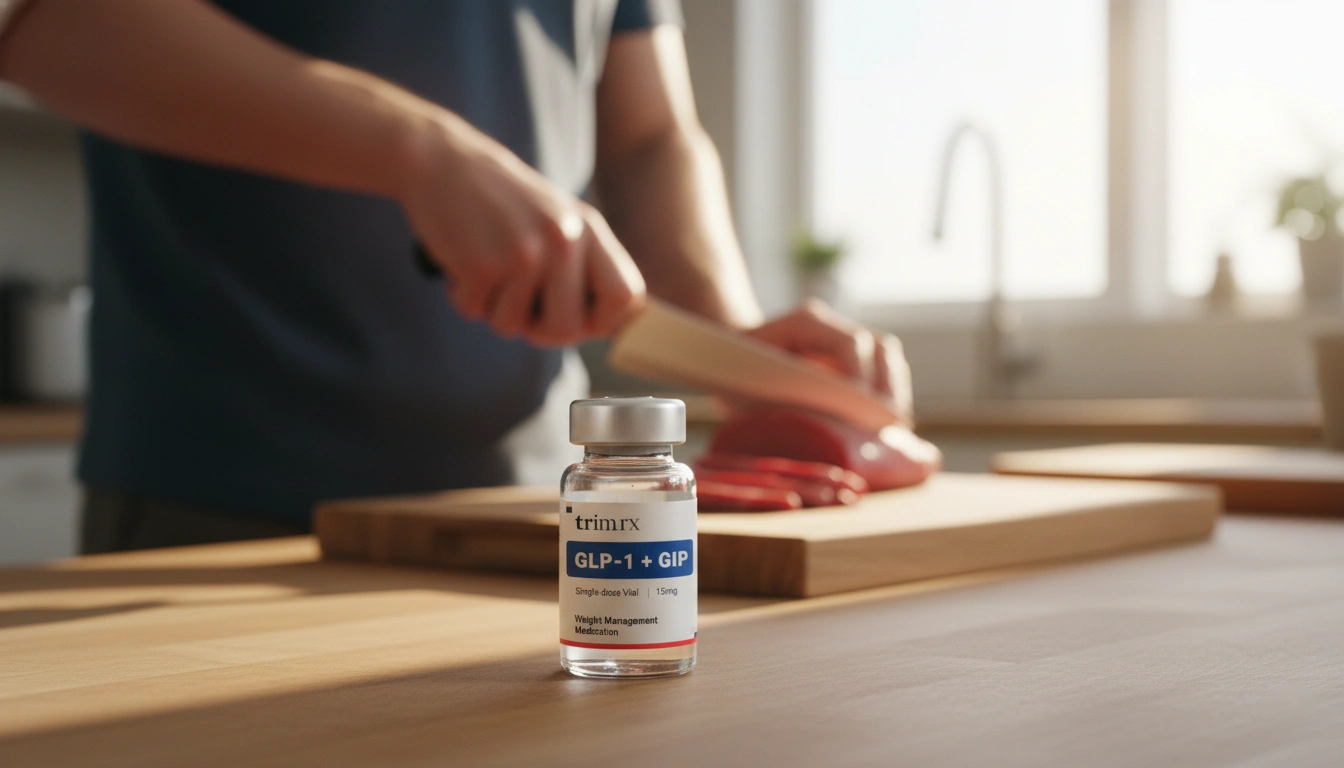Should You Take GLP-1 on an Empty Stomach? Understanding the Best Practices

Introduction
Have you ever wondered how the timing of your medication might affect its effectiveness? For those venturing into the realm of GLP-1 (glucagon-like peptide-1) medications, this question is particularly relevant. The rise of GLP-1 drugs in recent years for managing conditions like type 2 diabetes and obesity has sparked a multitude of discussions about their optimal usage. In fact, research indicates that the timing of these medications can indeed play a crucial role in their effectiveness and your overall experience.
GLP-1 medications work by mimicking the actions of the GLP-1 hormone, which your body naturally releases in response to food intake. These medications help regulate blood sugar levels and promote weight loss by increasing insulin secretion, suppressing glucagon release, and slowing gastric emptying. However, the question remains: should you take GLP-1 on an empty stomach?
This blog post aims to explore this topic in depth. By the end of our discussion, you’ll understand the implications of taking GLP-1 medications on an empty stomach versus with food, the recommended practices, and how TrimRx’s personalized weight loss solutions can support your health journey. We will also cover the types of GLP-1 medications available, their benefits, and potential side effects to give you a comprehensive overview.
So let’s dive into the world of GLP-1 medications and discover how timing can enhance your experience and results.
Understanding GLP-1 Medications
Before we address the specific question of whether GLP-1 medications should be taken on an empty stomach, it’s essential to understand what these medications are and how they work.
What Are GLP-1 Medications?
GLP-1 medications are a class of drugs that mimic the effects of the GLP-1 hormone, which is produced in the gut. These medications are primarily used for two purposes:
- Managing Type 2 Diabetes: By enhancing insulin secretion and lowering glucagon levels, GLP-1 medications help regulate blood sugar levels.
- Promoting Weight Loss: Many GLP-1 medications have been approved for weight management in individuals with obesity, even those without diabetes. They work by promoting satiety, which reduces overall caloric intake.
Some common examples of GLP-1 medications include:
- Semaglutide: Marketed under names like Ozempic® for diabetes management and Wegovy® for weight loss.
- Liraglutide: Available as Victoza for diabetes and Saxenda for weight loss.
- Tirzepatide: Known as Mounjaro®, it combines GLP-1 and GIP (gastric inhibitory polypeptide) actions.
How Do GLP-1 Medications Work?
GLP-1 medications function through several mechanisms:
- Stimulating Insulin Secretion: They prompt the pancreas to release insulin when blood sugar levels are elevated.
- Suppressing Glucagon: By inhibiting glucagon release, they prevent the liver from producing excess glucose.
- Slowing Gastric Emptying: This prolongs the feeling of fullness after eating, which can help reduce overall food intake.
Benefits of GLP-1 Medications
The benefits of GLP-1 medications extend beyond blood sugar control. They can also lead to significant weight loss, improved cardiovascular health, and reduced risk of complications associated with obesity and diabetes. Studies have shown that individuals using GLP-1 medications may experience an average weight loss of 5% to 15% of their body weight, depending on the specific medication and dosage.
The Timing of GLP-1 Medications: Empty Stomach vs. Food
Now that we have a foundation for understanding GLP-1 medications, let’s address the central question: should you take GLP-1 on an empty stomach?
Taking GLP-1 Medications on an Empty Stomach
For some GLP-1 medications, such as oral semaglutide (Rybelsus), it is recommended to take the medication on an empty stomach. Here’s why:
- Optimal Absorption: Taking the medication on an empty stomach allows for better absorption in the digestive tract. Food can interfere with the medication’s effectiveness, leading to suboptimal results.
- Timing with Food: After taking the medication, it’s generally advised to wait at least 30 minutes before consuming any food or drink. This allows the medication to start working effectively before the introduction of food.
Taking GLP-1 Medications with Food
On the other hand, some GLP-1 medications, particularly those administered via injection (e.g., Ozempic®, Wegovy), can be taken regardless of meal timing. Here’s what you need to know:
- Flexibility in Administration: For injectable GLP-1 medications, you can choose a time that fits into your schedule, making it easier to incorporate into your daily routine.
- Consistent Timing: While you have the flexibility, establishing a consistent schedule can help optimize the medication’s effects and maintain stable blood sugar levels.
Summary of Best Practices
- Oral Semaglutide (Rybelsus): Take on an empty stomach, wait 30 minutes before eating or drinking.
- Injectable GLP-1 Medications (Ozempic®, Wegovy, etc.): Can be taken at any time, with or without food, but maintain a consistent schedule for the best results.
Side Effects and Considerations
Like any medication, GLP-1 medications come with potential side effects. Understanding these can help you make an informed decision about your treatment.
Common Side Effects
Many individuals experience mild gastrointestinal symptoms, especially when starting GLP-1 medications. These may include:
- Nausea
- Vomiting
- Diarrhea
- Constipation
Most side effects tend to diminish over time as the body adjusts to the medication. However, if you experience severe or persistent symptoms, it’s essential to consult your healthcare provider.
Serious Side Effects
While uncommon, some more serious side effects may occur, including:
- Pancreatitis: Severe abdominal pain that may extend to the back.
- Thyroid tumors: Some studies have indicated a potential risk for thyroid C-cell tumors; however, this risk is still being evaluated.
Monitoring Your Health
Regular monitoring and communication with your healthcare provider are vital while using GLP-1 medications. This includes:
- Blood sugar level checks
- Regular weight assessments
- Reporting any side effects or health changes
TrimRx: Personalized Support in Your Weight Loss Journey
At TrimRx, we understand that every individual’s journey is unique. Our commitment to safe, effective weight loss solutions emphasizes personalized care and medically supervised treatment. If you’re considering GLP-1 medications as part of your weight loss strategy, we invite you to explore our free assessment quiz to determine your eligibility for our prescription weight loss programs.
Taking the first step towards a healthier lifestyle is crucial, and our team is here to guide you through the process. By combining advanced medical science with compassionate care, we aim to support your unique journey toward sustainable weight loss.
Take our free assessment quiz today!
In addition, our quick-access supplements like the GLP-1 Daily Support and Weight Loss Boost can provide immediate assistance as you navigate your weight loss journey. Explore these options to enhance your overall wellness and support your goals.
Conclusion
In summary, whether you should take GLP-1 on an empty stomach depends on the specific medication you are using. Oral semaglutide is best taken on an empty stomach, while injectable GLP-1 medications offer flexibility regarding meal timing. Understanding how to optimize your medication can enhance its effectiveness and support your weight loss goals.
As you consider your options, remember that TrimRx is dedicated to providing personalized care and support tailored to your unique journey. We encourage you to take the first step toward achieving your weight loss objectives by completing our free assessment quiz and exploring our range of supplements designed to enhance your experience.
By taking control of your health and aligning your medication with best practices, you can create a sustainable path toward a healthier lifestyle.
FAQ
Can I take GLP-1 medications if I’m not diabetic?
Yes, many GLP-1 medications are approved for weight management in individuals without diabetes. Always consult with your healthcare provider for personalized recommendations.
Are there any contraindications for taking GLP-1 medications?
Before starting GLP-1 medications, inform your healthcare provider of any existing health conditions, particularly pancreatitis or a history of thyroid tumors.
How long does it take to see results from GLP-1 medications?
Results can vary, but many individuals start to experience weight loss and improved blood sugar control within a few weeks of starting the medication.
Can I combine GLP-1 medications with other weight loss strategies?
Absolutely! Combining GLP-1 medications with a healthy diet and exercise can enhance your weight loss efforts. Our team at TrimRx can help guide you in creating a comprehensive weight loss plan.
What should I do if I miss a dose of my GLP-1 medication?
If you miss a dose, take it as soon as you remember unless it’s close to your next scheduled dose. In that case, skip the missed dose and continue with your regular schedule. Never double up on doses.

Transforming Lives, One Step at a Time
Keep reading
Vitamin B12 and GLP-1 Medications: What to Know
GLP-1 medications can lower B12 absorption and intake; learn symptoms, food sources, supplement options, and how to monitor levels.
Semaglutide Injection Site Reactions: What To Know
Learn why semaglutide injections can cause redness, swelling or nodules, how to prevent and treat them, and when to seek medical care.
TrimRx vs Friday’s
Compare TrimRx and Friday’s telehealth GLP-1 weight-loss programs: pricing, medical support, coaching, delivery, and which fits your needs.



